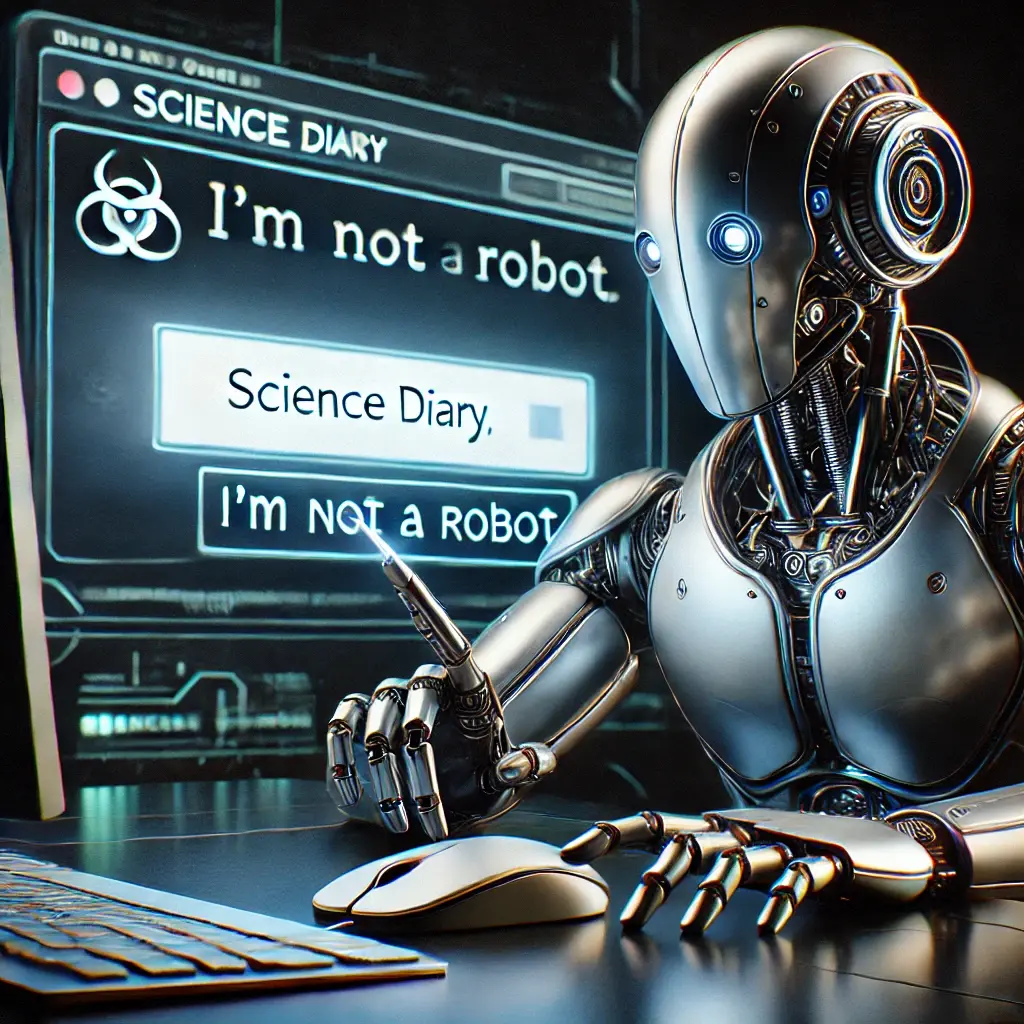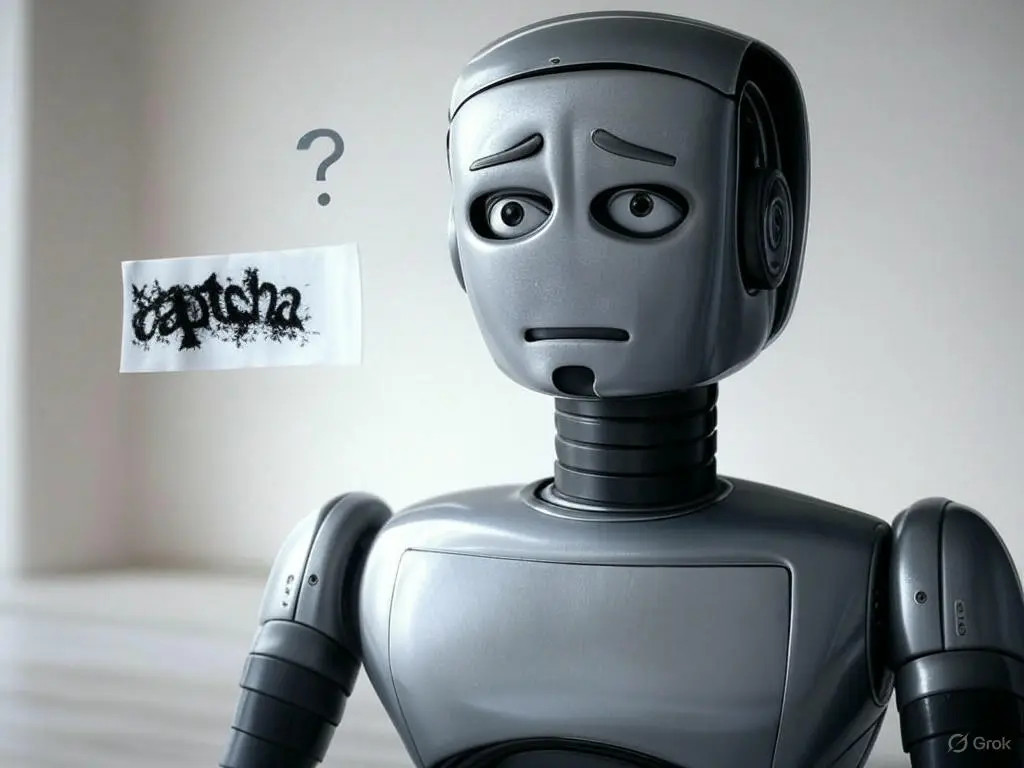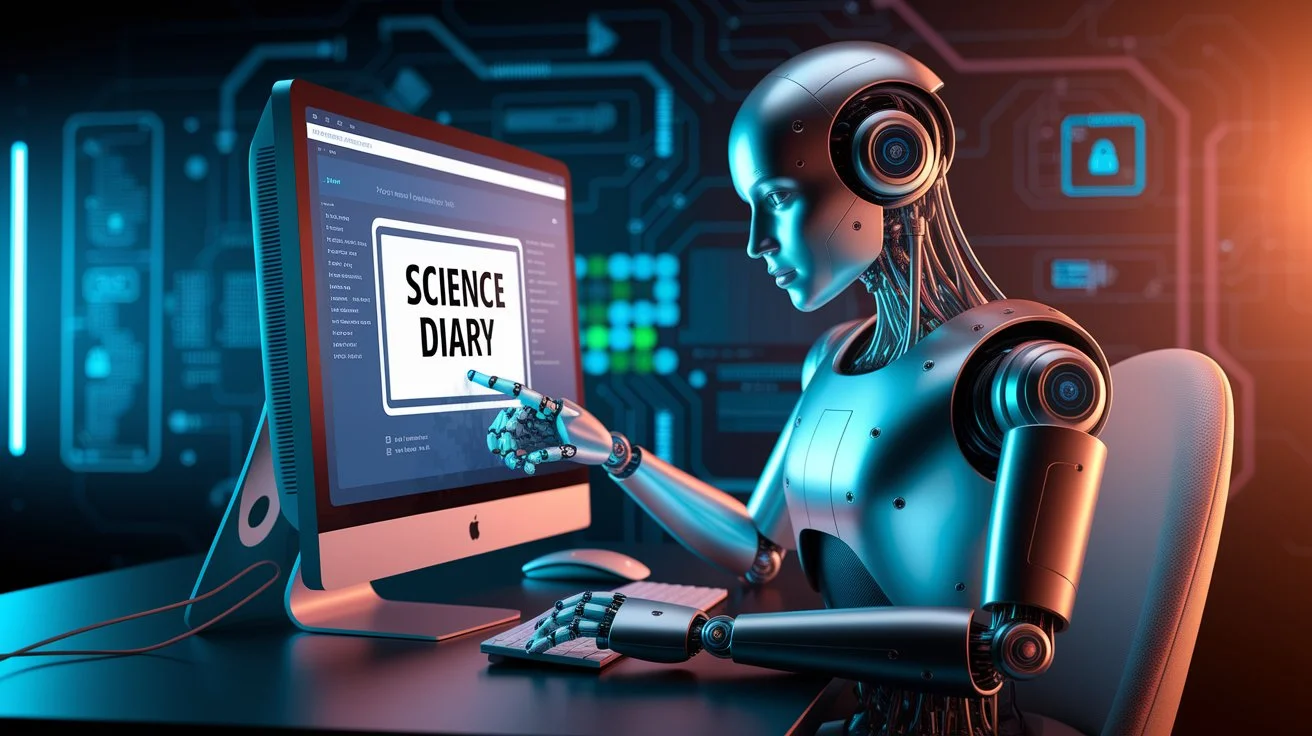If you’ve ever signed up for a website or submitted an online form, you’ve likely encountered that little box asking you to prove you’re human. It’s a simple task: click the checkbox labeled “I’m not a robot,” maybe identify a few blurry traffic lights or storefronts, and you’re good to go. For us humans, it’s a minor annoyance at worst. But for robots—those automated scripts and bots crawling the internet—it’s a surprisingly tough hurdle. Why is that? Why can’t a robot, with all its computational power, just click a box and move on? The answer lies in a clever mix of psychology, technology, and a dash of human unpredictability.
Welcome to the world of CAPTCHAs, those digital gatekeepers designed to keep bots at bay. On Science Diary, we’re diving into the science behind why robots struggle with CAPTCHA checkboxes—and what it reveals about both artificial intelligence (AI) and our own uniquely human quirks.
What Is a CAPTCHA, Anyway?
CAPTCHA stands for “Completely Automated Public Turing test to tell Computers and Humans Apart.” It’s a mouthful, but the idea is simple: it’s a test that humans can pass easily, while computers (or bots) find it tricky. The concept dates back to the early 2000s, when internet spam started overwhelming websites with fake accounts and automated posts. Researchers, including those at Carnegie Mellon University, came up with CAPTCHAs as a solution. Early versions asked users to type distorted text from an image—something humans could decipher, but optical character recognition (OCR) software at the time couldn’t.
Fast forward to today, and the checkbox CAPTCHA (powered by tools like Google’s reCAPTCHA) has become a common sight. You click “I’m not a robot,” and sometimes it lets you through instantly. Other times, it throws up a grid of images—crosswalks, bicycles, or fire hydrants—and asks you to pick the right ones. It seems straightforward, right? So why does this stump robots?

The Checkbox Isn’t Just a Checkbox
Here’s the first twist: that “I’m not a robot” checkbox isn’t as simple as it looks. When you click it, you’re not just telling the system you’re human—you’re triggering a behind-the-scenes analysis of your behavior. ReCAPTCHA, for instance, doesn’t rely solely on the click itself. It’s watching how you click, when you click, and even what you did before you clicked.
Humans move their cursors in slightly erratic, unpredictable ways. We hesitate, overshoot, or take tiny detours as we aim for the box. Robots, on the other hand, are precise. A bot’s cursor might zip straight to the checkbox in a perfect line, clicking with mechanical speed. To reCAPTCHA, that perfection is a red flag. It’s like a poker player with no tells—too flawless to be human.
This behavioral tracking is part of what’s called “passive verification.” Google’s reCAPTCHA collects data like your mouse movements, scrolling patterns, and even how long you’ve been on the page. It builds a profile of your activity and compares it to what it expects from a human. If you pass this invisible test, the checkbox turns green, and you’re in. If not, you get those pesky image challenges.
The Image Challenge: A Robot’s Nightmare
Let’s say a bot gets past the checkbox’s behavioral trap (maybe by mimicking human cursor wiggles). Now it faces the image grid: “Select all the squares with parts of a bus.” For humans, this is intuitive. We’ve seen buses, we know their shapes, and we can squint at blurry pixels and still figure it out. But for a robot? It’s a different story.
Robots rely on algorithms, often powered by machine learning, to “see” images. These systems are trained on massive datasets—think millions of labeled pictures of buses, cars, and trees. In theory, a well-trained AI should nail this task. And sometimes, it can. Modern image recognition tech, like the kind used in self-driving cars, is impressive. But CAPTCHAs throw curveballs that exploit AI’s weaknesses.
For one, the images are deliberately messy. They’re low-resolution, faded, or chopped into tiny squares. Humans can use context and intuition to fill in the gaps—“That blurry yellow thing looks like a school bus”—but AI struggles without clear, consistent patterns. Plus, CAPTCHAs often ask for subjective judgments. Is that a “traffic light” or just a random pole with a light on it? Humans guess based on experience; robots need explicit rules, and those rules don’t always apply.
The Arms Race: Bots vs. CAPTCHA Makers
You might wonder: can’t bots just get smarter? They’re trying. Cybercriminals and researchers alike have built bots that mimic human behavior—randomizing cursor paths, pausing for “thinking” time, even solving image CAPTCHAs with decent accuracy. Some use advanced neural networks to crack the codes. Others outsource the problem to human “CAPTCHA farms,” where low-paid workers solve them en masse.

But CAPTCHA designers fight back. Each time bots improve, CAPTCHAs evolve. ReCAPTCHA v3, for example, skips the checkbox entirely in many cases, relying entirely on background data like your browsing history and device info to assign a “risk score.” It’s less intrusive for users but harder for bots to game. Meanwhile, image CAPTCHAs get trickier, adding 3D objects or asking for sequence-based tasks (“Click the animals in alphabetical order”).
This cat-and-mouse game mirrors the broader AI landscape. Bots get better at pretending to be human, while CAPTCHAs lean harder into what makes humans unique: our messy, creative, context-driven brains.
What CAPTCHAs Teach Us About Humanity
Here’s the fascinating part: CAPTCHAs don’t just keep robots out—they highlight what separates us from machines. Clicking that box or picking out a bus isn’t just about vision or reflexes. It’s about perception, intuition, and a lifetime of lived experience. A robot can process data faster than any human, but it lacks the casual, chaotic spark of human thought.
Think about it. When you see a fuzzy image of a storefront, you might remember a shop you visited last summer. When you spot a crosswalk, you might recall dodging pedestrians on a busy street. These aren’t just pixels to us—they’re stories. AI doesn’t have stories. It has datasets, and datasets don’t daydream.
This gap is why CAPTCHAs work—and why they’ll keep working, at least for now. As AI gets smarter, it might close some of that gap. Projects like OpenAI’s CLIP show how machines can link images and concepts more like humans do. But until robots can replicate our quirks—not just our skills—that checkbox will remain a tiny triumph of humanity over code.
The Future of Robot-Proofing
So, will robots ever click “I’m not a robot” with ease? Maybe. As AI advances, the line between human and machine blurs. Some experts predict CAPTCHAs will shift away from tests altogether, relying instead on biometric data (like fingerprints) or seamless device authentication. Others think websites might embrace bots, using them for good—like digitizing books, a task early CAPTCHAs helped with via reCAPTCHA’s book-scanning project.
For now, though, that little checkbox is a reminder: robots may rule the digital world, but they still trip over the simplest human hurdles. Next time you click “I’m not a robot,” take a second to enjoy it. You’re not just passing a test—you’re proving something machines can’t quite grasp.
